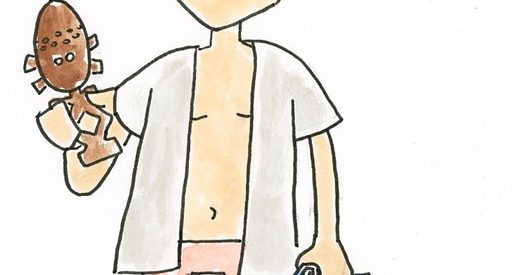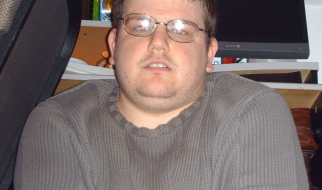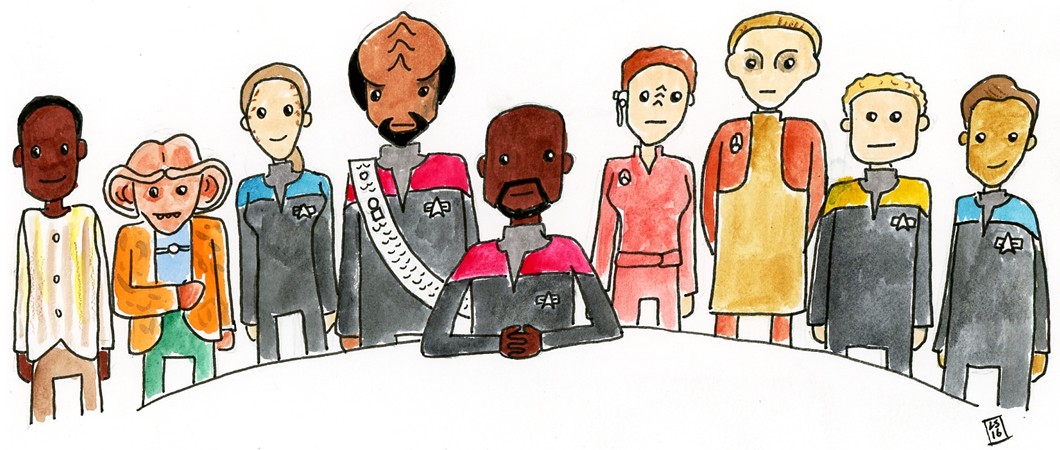 Your friends for the next 82.5 hours.
Your friends for the next 82.5 hours.
When I was in fifth grade, my Dad helped me build a homemade costume so I could go as a Borg from Star Trek for Halloween. Everyone in class asked me, ?What are you?? and I said, ?I?m a Borg. From Star Trek.?
As a kid, Star Trek: The Next Generation was my favorite show, but some time between fifth grade and now, I?ve come to recognize that while Next Gen holds a special place in my heart, it is not the best incarnation of Star Trek. That title belongs to what writer Ronald D. Moore called Next Generation?s ?bastard stepchild,? Star Trek: Deep Space Nine.
Deep Space Nine is a remarkable show. It is unfairly overlooked as one of the foundational programs (like Buffy, The Sopranos, and Hill Street Blues) of our current golden age of television. DS9 introduced long, serialized stories about morally ambiguous characters to network television ten years before Battlestar Galactica, Breaking Bad, and Game of Thrones.
DS9 is funny, exciting, and mysterious. It has some of the best plot twists in the history of television. It has a pleasing continuity, so that episodes build upon one another ? characters make mistakes and then they grow and learn over time. Best of all, Deep Space Nine is impeccably structured, with a beginning, middle, and end (when Deep Space Nine ends, it ends).
I want to make the case that Deep Space Nine is worth your time in 2016, and give you my list of the essential episodes to watch. But in order to understand what Deep Space Nine is all about, you have to know a little bit about Star Trek.
A little bit about Star Trek
Deep Space Nine was born out of the politics of the Next Generation writers? room, which writer Tracy Torm described as ?an insane asylum.?
Gene Roddenberry, the utopian visionary/despotic lunatic creator of Star Trek, established a set of strict rules about how people would behave in the future. Roddenberry said that in the 24th century, there would be no money because futuristic technology would provide for people?s material needs. There would be no smoking, no piracy, no religion, and no prejudice. After Roddenberry cast Patrick Stewart as the captain in Next Generation, a reporter joked, ?Surely they would have cured baldness by the 24th century!? Roddenberry replied, ?In the 24th century, they wouldn?t care.?
Roddenberry also decreed that among the enlightened members of the Federation, there would be no interpersonal conflict. He banned ?stories in which our characters do something stupid or dangerous.? The Next Generation writers hated these rules, because, to put it lightly, conflict and danger are traditionally considered important components of a good story.
Next Generation writer Ronald D. Moore (who would go on to write for DS9 and create Battlestar Galactica) said, ?It was a constant problem that we just sort of gnashed our teeth about. It never made any logical sense or any dramatic sense. And we were always bitching and moaning about it. And my personal theory was that Gene sort of started to believe in himself as more of a visionary than a writer at a certain point. He started to believe the stuff that he was creating a utopian future and wanted the Next Generation universe to be reflective of the utopian universe that so many people had told him he had been creating for all these years.?
Here?s an anecdote that I love, from Next Gen writer (and future DS9 showrunner) Ira Steven Behr:
I created this planet called Risa, which was a pleasure planet. The captain was stressed out and needed a vacation. He went on this vacation and there was a holosuite there ? or a holodeck ? I guess a holosuite, we called it.
It said, ?Face Your Greatest Fear!? and it was like a carnival place. And he thought, ?Oh, cool, this is going to put me in a good mood. What I need is to fight some Klingons without thinking about the repercussions of it, or go after some Romulans or whatever it is.
And he goes into this holodeck, and it was all about the captain being promoted to admiral, and losing the Enterprise, and Riker being bumped up to captain of the Enterprise. Basically, though we never really hit it on the head, it?s about growing old. Not to grow old, but your time of life changing and suddenly you?re not going to be the guy going off on adventures, you?re going to be sitting at a desk somewhere, SENDING people on adventures. That?s his greatest fear.
Then it became a whole long story that I?m not going to get into now, but it got SLAMMED dead by Gene [Roddenberry]; it was my big ?Gene meeting?, where he slammed me down with all kind of pronouncements about what Star Trek is and is not. It was like, ?Picard fears nothing. If it?s time for him to grow old, to become an admiral, he becomes an admiral! He would not think about that, AT ALL. Picard is John Wayne!? Well, John Wayne had all kinds of fears and guilt and angers and bitterness in his best movies? ?No. John Wayne is a hero, Picard is a hero, we are not doing this episode.? Even though I guess this had happened a lot on the show in the first couple seasons, it hadn?t hit us.
And that?s when Gene sat there, ??but I love the pleasure planet! Get the captain laid!?
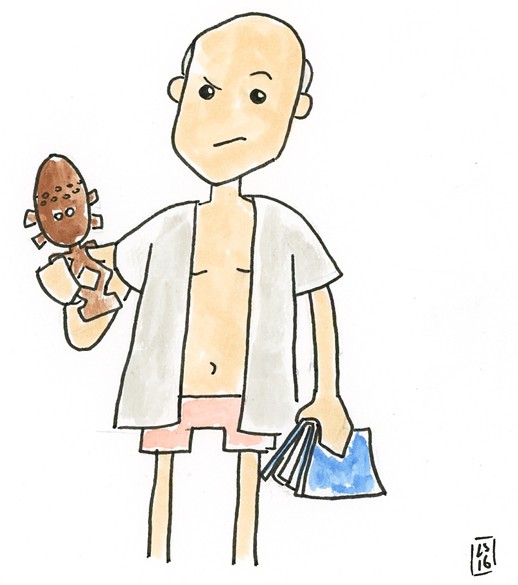 ?Get the captain laid!?
?Get the captain laid!?
After Roddenberry passed away, NBC president Brandon Tartikoff asked Next Gen executive producer Rick Berman and showrunner Michael Piller to make a new Star Trek series ? the first without Gene Roddenberry. Tartikoff said he wanted this new show to have a classic western format: a man and his son arrive at a frontier town on the edge of known civilization.
Rick Berman started to work on the new show by grappling with what he called ?Roddenberry?s Box.? Berman:
The problem with Star Trek: The Next Generation is Gene created a group of characters that he purposely chose not to allow conflict between. Starfleet officers cannot be in conflict, thus it’s murderous to write these shows because there is no good drama without conflict, and the conflict has to come from outside the group.
What we wanted to do was something that was almost paradoxical ? bring conflict but not break Gene?s rules. They still play paramount importance in what we?re doing. We created an environment where Starfleet officers were in a location that they weren?t happy about being in, and they were in a location where the people who lived there weren?t all that happy about them being there. We also created a situation where we had people who were members of our core group who were not Starfleet. So we have a lot of frustration and conflict.
A lot of frustration and conflict
DS9 is essentially a Western with an ensemble cast. Writer Robert Hewitt Wolfe said, ?We had the country doctor, and we had the barkeeper, and we had the sheriff and we had the mayor, we had it all, it was all there. We had the common man, Miles O?Brien, the Native American, Kira.?
As the show begins, the militaristic Cardassians have recently ended a brutal 50-year occupation of the ancient, peaceful Bajorans. Bajor has petitioned to join the Federation (a kind of futuristic U.N. devoted to peaceful exploration) and our heroes head to a space station outside of Bajor (formerly a Cardassian military outpost) to oversee that process.
Most of the action takes place on the station, which is a remote outpost at the edge of Federation space. This naturally lent itself to a sense of continuity ? Ronald D. Moore said:
?The nature of the show itself was that it is a space station that doesn?t go anywhere so the storylines tended to stick around. The Enterprise could pull up to a planet and have an episode and keep going. With Deep Space Nine, anything that took place on the station, well guess what? Next week you are still on the station. And Bajor is not going anywhere. So really you had to keep playing those stories. You couldn?t make a big change in Bajor?s political structure in one week and then ignore it then next. You had to keep it going.?
Perhaps most interestingly, DS9 added Ferengi characters to the main cast? money-obsessed, capitalist aliens used mostly as a joke in Next Generation. Showrunner Ira Steven Behr said, ?We had so many fucking heroes. It was nice to have people who were like us, scared and looking out for themselves.?
 One of DS9’s best friendships, Nog (Ferengi) and Jake (Federation)
One of DS9’s best friendships, Nog (Ferengi) and Jake (Federation)
The Ferengi stories lead to some wonderful picking apart of classic Star Trek tropes, such as this conversation between Jake (the son of the Federation captain of the station) and Nog (a Ferengi):
Nog: It?s my money, Jake! If you want to bid at the auction, use your own money.Jake: I?m human, I don?t have any money.Nog: It?s not my fault that your species decided to abandon currency-based economics in favor of some philosophy of self-enhancement.Jake: Hey, watch it! There?s nothing wrong with our philosophy, we work to better ourselves and the rest of humanity.Nog: What does that mean, exactly?Jake: It means? it means? we don?t need money!Nog: Well, if you don?t need money, then you certainly don?t need mine!
Reader Evan Jacobs sees a more contemporary theme in the politics of Deep Space Nine: ?To me, DS9 was largely about the Jewish diaspora. Cardassians are Nazis, Ferengis represent Jews as the world sees them (i.e., anti-Semitism), and Bajorans represent Jews as they see themselves (i.e., Israel). Perhaps I?m reading too much into this, but it always seemed that way to me.? I?ve always read themes of Jewish history into Deep Space Nine as well (in my view: the Federation is the Catholic church, it?s post-currency society is the prohibition on usury, and the Ferengis are the Space Jews). Maybe that?s one of the reasons the show speaks so personally to me.
All of these elements come together to make Deep Space Nine something special from the beginning. The continuity of the station meant that what happened each week mattered and had lasting consequences for the characters. The show took a darker tone than Next Generation. It became more critical of the the Federation?s techno-utopia, and examined themes like scarcity, militarism, and religious faith. Suddenly Star Trek had traitors, dissidents, terrorists, and the Dominion, a kind of philosophical counterpoint to the Federation designed to push our heroes to their moral limits.
Ronald D. Moore:
I?d like us to be remembered as the Trek series that dared to be different. We took chances in a franchise that has every reason to play it safe and spoon-feed the same old thing to the audience week after week. We challenged the characters, the audience, and the Star Trek universe itself. Sometimes we failed (sometimes spectacularly) but we never stopped trying to push the show into new directions.
Eventually [Executive Producer Rick Berman] and the studio just kind of threw up their hands and gave up at a certain point and started concentrating on Voyager. [laughs] The mad men running Deep Space Nine and the writers room weren?t listening and the show didn?t seem to work any other way. So we just did what we wanted to at a certain point.
?What does that mean, exactly??
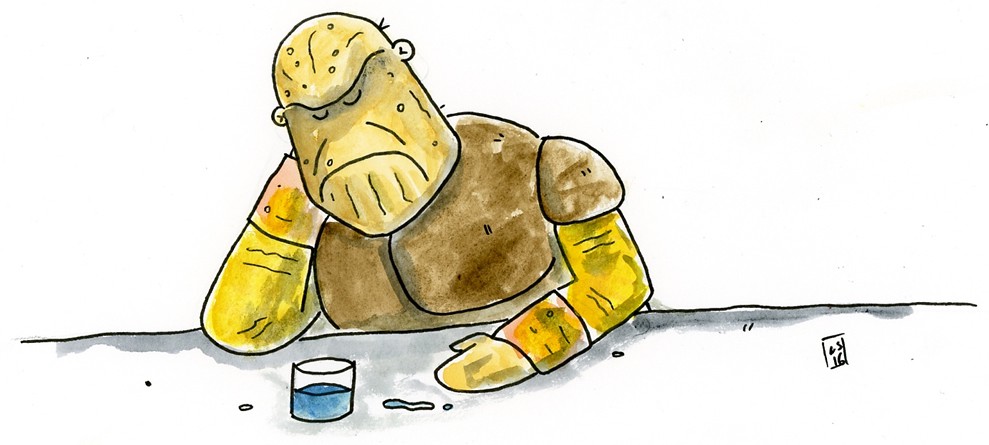 Morn knows what it all means.
Morn knows what it all means.
The Star Trek universe appeals to me because it is an unapologetically progressive view of technology and our human capacities. In my episode guide for Next Generation, I wrote: ?Star Trek has a special place in my heart because it shows us a future where we continue to advance technology and explore without destroying ourselves or shouting over each other on Twitter all day.? Star Trek is optimistic on the small issues (universal healthcare, free education, a well-funded public space program) and the big issues (peaceful post-racial utopianism, the elimination of material need). That?s Next Generation.
But Deep Space Nine starts to question some of the uncomfortable contradictions in Star Trek?s progressivism, which I personally find to be more meaningful than believing the right things from the beginning. Consider this fable from Scott Alexander:
The Emperor summons before him Bodhidharma and asks: ?Master, I have been tolerant of innumerable gays, lesbians, bisexuals, asexuals, blacks, Hispanics, Asians, transgender people, and Jews. How many Tolerance Points have I earned for my meritorious deeds??
Bodhidharma answers: ?None at all?.
The Emperor, somewhat put out, demands to know why not.
Bodhidharma asks: ?Well, what do you think of gay people??
The Emperor answers: ?What do you think I am, some kind of homophobic bigot? Of course I have nothing against gay people!?
And Bodhidharma answers: ?Thus do you gain no merit by tolerating them!?
How much merit do our heroes gain by peacefully seeking out new life and new civilizations if they are incapable of conflict in the first place? Is it really tolerance if the Federation only has to tolerate those who will adopt Federation ideology? Or is the Federation essentially the same as the Borg, the evil cyborgs whose catchphrase is: ?We will add your biological and technological distinctiveness to our own. Your culture will adapt to service us. Resistance is futile.? What happens when our enlightened Federation heroes encounter someone intolerable, like the Dominion?
A thesis of Deep Space Nine is that our political strengths (tolerance, pluralism; the whole Cosmopolitan ball of wax) and our personal strengths (sensitivity, playfulness, friendship) necessarily make us weak too. Deep Space Nine challenges us to accept our own and others? flaws because to eliminate them in Next Generation?s relentless drive towards self-improvement would mean losing our virtues in the process.
Deep Space Nine is literally about that. That?s the topic of the show. How cool is that?
But is it any good?
I think one of the worst knocks against Star Trek is that it can be extremely hokey ? full of what Ronald D. Moore described as, ?stock characters, techno-double-talk, bumpy-headed aliens, thespian histrionics, and empty heroics.? Moore once described a ?Trek clichs? board in the Next Generation writers? room:
?After every pitch session, because we were taking endless amounts of writers coming to pitch, the writers would all sort of gleefully go to the clich board and we would log how many of the Trek clichs we heard that day: Data becomes man, Data becomes god, they discover a planet and the planet is alive??
When I?m trying to figure out if a piece of science fiction is good or not, I often think of this 1975 essay by legendary sci-fi novelist Ursula K. Le Guin, called Science Fiction and Mrs. Brown:

Virginia Woolf was fascinated with Mrs. Brown, and said, ?She looked very small, very tenacious, at once very frail and very heroic. And I have never seen her again.? Ursula K. Le Guin believes that this encounter with Mrs. Brown is the essential subject matter of novels. ?She appears to the novelist, inside a railway carriage or inside the mind, and she says, Catch me if you can!?

Deep Space Nine is the science fiction show that can sit across from Mrs. Brown ? it is chock full of full, flawed characters with world views more diverse than their forehead prostheses. The setting, the technology? it?s all there to tell us about these people and their relationships. This clip, a conversation between two ensemble characters talking to each other while our Federation heroes are off saving the day, is often cited as a fan-favorite moment from the show:
Or consider this scene from the pilot, where Dr. Bashir, a young Starfleet careerist, meets Major Kira, a liaison officer from the Bajoran government, reluctantly assigned to work with the Federation:
Bashir: Oh, this will be perfect ? real? frontier medicine! Kira: Frontier medicine? Bashir: Major, I had my choice of any job in the Fleet. Kira: Oh did you? Bashir: I didn?t want some cushy job or a research grant? I wanted? this! The farthest reaches of the galaxy! One of the most remote outposts available! This is where the adventure is, this is where heroes are made. Right here ? in the wilderness. Kira: This ?wilderness? is my home.
 Dr. Bashir and Major Kira
Dr. Bashir and Major Kira
Deep Space Nine even takes the time to humanize its villains. One of the most memorable is Winn Adami, a detestable lawful-evil leader of Bajor?s religion portrayed by Louise Fletcher (Nurse Ratched in One Flew over the Cuckoo?s Nest). She is truly one of the least-likable characters I can think of in any media ? she is the Dolores Umbridge of Star Trek. I hate her. But even Winn gets this conversation with Major Kira:
Kira: It takes a lot of courage to admit you?re wrong. Winn: And you think I lack courage? Kira: I didn?t say that. Winn: But it is what you think. Those of you who were in the Resistance, you?re all the same. You think you?re the only ones who fought the Cardassians, that you saved Bajor singlehandedly. Perhaps you forget, Major, the Cardassians arrested any Bajoran they found teaching the word of the Prophets. I was in a Cardassian prison camp for five years and I can remember each and every beating I suffered. And while you had your weapons to protect you, all I had was my faith and my courage.
My friend Trin wrote about this scene: ?Most people aren?t as bad or as good as you?d like them to be. Most people aren?t bad enough or good enough to make things easy for you.? So it goes on Deep Space Nine.
What you should know going in
- Deep Space Nine is a direct sequel to Next Generation, and you?ll like it more if you?ve seen TNG. Part of the fun of DS9 is continuing plot threads and seeing characters from TNG. I wrote a guide to watching Next Generation in 40 hours that will cover everything you need to watch Deep Space Nine.
- Deep Space Nine is a political show, and the politics are complicated. The show will ask you to care about many different political systems interacting with one another ? it?s not confusing, but if you pay attention, it?s really fun to see how the Klingon, Bajoran, Cardassian, and Ferengi political situations change over time.
- The two-part pilot episode, Emissary, is excellent. Deep Space Nine stands alone as the only Star Trek show to have a good pilot.
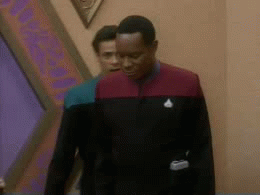 Season one?s nadir, ?Move Along Home.?
Season one?s nadir, ?Move Along Home.?
- That being said, seasons one and two are pretty bad, and it takes a while for the writers to find their footing. Season one is memorable for some truly bonkers episodes such as Move Along Home, where the cast gets trapped inside of an alien board game. Before joining the show as a writer, Ronald D. Moore said, ?I remember watching Move Along Home and wondering if everyone had lost their minds.? The show doesn?t get great until season three, when Ira Steven Behr takes over as showrunner and Moore joins the writing staff. In season four, the producers finally allow Sisko to shave his head, as actor Avery Brooks had requested from the beginning. That?s when the show has fully, confidently hit its stride.
 Captain Sisko shaving his head is Deep Space Nine?s ?Growing the Beard? moment
Captain Sisko shaving his head is Deep Space Nine?s ?Growing the Beard? moment
- Seasons 3?7 are rock solid, and the show starts to move in long, serialized arcs. Season four opens up with three of the best episodes that Star Trek has ever produced ? The Visitor is my favorite episode of Star Trek and maybe my favorite episode of television.
- I have tried my best to condense Deep Space Nine into a list of essential episodes, but the show works as a cohesive whole. Skipping episodes of DS9 isn?t like skipping episodes of The Wire, but if you like the pilot and want to see more, I encourage you to throw out my episode guide and watch the whole thing straight through. Avoid spoilers if you can? DS9 is full of great surprises.
How I picked episodes
In my guide to Star Trek: The Next Generation, I recommended about forty hours of essential Star Trek viewing. I tried to get DS9 down to forty hours, but I couldn?t do it ? it has twice as many unskippable episodes as TNG due to its continuity and overall excellence. Here?s the story lines I focused on in assembling this guide:
- The political situation between Cardassia and Bajor
- The Maquis, and how the Federation deals with internal agitation and dissent
- The Dominion, Deep Space Nine?s main adversary
- The Klingon Empire, and the political situation on Qo?noS following the events of Next Generation (did I mention that you should watch Next Generation prior to DS9?)
- The Ferengi; these characters are the most special to DS9, something that no other sci-fi show could ever pull off
- ?O?Brien Must Suffer? episodes ? evidently, Colm Meany was so likable as chief engineer Miles O?Brien that the writers went to great lengths to put him in at least one horrible situation each season. Writer Robert Hewitt Wolfe said, ?If O?Brien went through something torturous and horrible, the audience was going to feel that, in a way they wouldn?t feel it with any of the other characters. Because all the other characters were sort of, I wouldn?t say larger than life, but nobler than life, but O?Brien was just a guy, trying to live his life and so if you tortured him that was a story.?
 O?Brien must suffer; sometimes he must also tear his pants.
O?Brien must suffer; sometimes he must also tear his pants.
- Deep Space Nine also had a good number of straight up goofy episodes, which I will recommend optionally if you like goofy Star Trek; I love these episodes (like the one where the characters are accidentally shrunken down to a tiny size, or the one where some of the characters accidentally go back in time and crash land at Area 51)
In my episode guide to Next Generation, I suggested that people begin with a strong episode in the middle of the series. Unfortunately, the serialized nature of Deep Space 9 means that you pretty much have to start with the pilot. Fortunately, the pilot is great, so go ahead and start there.
Here we go!
Season 1
The first season of Deep Space Nine focused on attracting Next Generation viewers at the expense of finding a direction of its own. As the station grew into a busy hub of travel and commerce, it became an easy trick for the writers to bring a Next Gen character through for the week.
Start with the two-part pilot, which is excellent. Past Prologue and A Man Alone continue to introduce the characters and establish the station. The Nagus is the first great Ferengi episode and introduces recurring guest star Wallace Shawn. Battle Lines, Duet, and In the Hands of the Prophets start to explore Bajoran politics; I?m especially fond of Battle Lines.
- S01E01: Emissary, Part I
- S01E02: Emissary, Part II
- S01E03: Past Prologue
- S01E04: A Man Alone
- S01E11: The Nagus
- S01E13: Battle Lines
- S01E19: Duet
- S01E20: In the Hands of the Prophets
Season 2
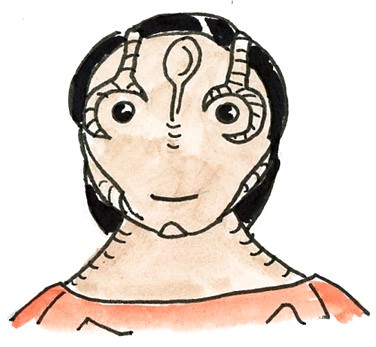 Season 2 establishes one of Star Trek?s greatest characters, Elim Garak.
Season 2 establishes one of Star Trek?s greatest characters, Elim Garak.
This is the season where Deep Space Nine starts to feel like Deep Space Nine. The first three episodes form one of the show?s first multi-episode arc. Cardassians and The Wire are early episodes about one of Star Trek?s all-time great characters, Elim Garak. Rules of Acquisition introduces the Dominion. Necessary Evil and The Alternate are great character stories for Odo. Whispers is this season?s O?Brien first Must Suffer episode; Tribunal is the second. They?re both great, poor guy. The Jem?Hadar begins the storyline that will fuel the next five seasons of Deep Space Nine.
Optional: Blood Oath (S02E19) is a nod to Seven Samurai with Klingons.
- S02E01: The Homecoming
- S02E02: The Circle
- S02E03: The Siege
- S02E05: Cardassians
- S02E07: Rules of Acquisition
- S02E08: Necessary Evil
- S02E12: The Alternate
- S02E14: Whispers
- S02E20: The Maquis, Part I
- S02E21: The Maquis, Part II
- S02E22: The Wire
- S02E24: The Collaborator
- S02E25: Tribunal
- S02E26: The Jem?Hadar
Season 3
In 1994 some of Deep Space Nine?s staff left to produce Star Trek: Voyager, including showrunner Michael Piller and director of photography Marvin Rush. Next Generation ended, and some of TNG?s strongest talent joined Deep Space Nine, including Ira Steven Behr as showrunner and Ronald D. Moore as supervising producer. Here is a great metaphor for how this new talent affected the show: DS9’s new director of photography, Jonathan West, began to shoot with telephoto lenses, which collapse the field of view and bring more of the set and extras into focus. This is the season where all of the politics and texture of the show that were previously in the background start to pay off in a big way.
The Search is just a cool, great episode of television. Civil Defense is a bottle episode with a twist. Heart of Stone is a wonderful episode that explores Odo and Kira?s relationship. Visionary is season four?s O?Brien Must Suffer episode, and one of the most memorable episodes of DS9 for me. Improbable Cause and The Die is Cast advance the relationship between Odo and Garak and shakes up Star Trek?s politics; these episodes give you a sense of the scale of the universe and the stakes of the story like nothing before. The Adversary is an incredible finale; the producers were asked not to make a cliffhanger, but if this doesn?t make you want to watch more Deep Space Nine, nothing will.
- S03E01: The Search, Part I
- S03E2: The Search, Part II
- S03E3: The House of Quark
- S03E05: Second Skin
- S03E06: The Abandoned
- S03E07: Civil Defense
- S03E13: Life Support
- S03E14: Heart of Stone
- S03E15: Destiny
- S03E16: Prophet Motive
- S03E17: Visionary
- S03E20: Improbable Cause
- S03E21: The Die is Cast
- S03E22: Explorers
- S03E23: Family Business
- S03E24: Shakaar
- S03E26: The Adversary
Season 4
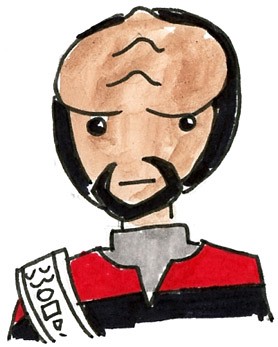 A new addition to the cast in season four.
A new addition to the cast in season four.
Deep Space Nine always struggled to find and keep an audience, and in between seasons three and four, the producers were pressured into shaking up the show. Michael Dorn (Worf from Next Generation) joins the main cast, and the Klingons become a major presence on Deep Space Nine. This kind of meddling could have been a disaster, but DS9 rolled with the punches and produced an incredible season; I have seen every season of every version of Star Trek and this is the first one that is consistently great from beginning to end. If you?re enjoying the show, this would be a great time to abandon my guide and just watch the whole thing.
The Way of the Warrior is an exciting, action-packed episode and a fresh look at DS9’s characters through the eyes of a new character. The Visitor is my favorite episode of Star Trek, make some time to call your dad after you watch this one. Starship Down is DS9’s ?the characters get trapped in the elevator together? episode. Hard Time is this season?s O?Brien Must Suffer episode, it?s heartbreaking. For me, For the Cause and Broken Link are the height of what Star Trek can achieve ? incredible twists and turns, moral dilemmas, and complicated characters.
Optional episodes: Rejoined (S04E06) is a love story that features Dax kissing another woman on screen; this was an incredibly risky and progressive episode for its time and is cited by some of the cast and producers as one of their favorites. Little Green Men (S04E08) is Deep Space Nine?s goofiest episode; it is exquisitely silly.
- S04E01: The Way of the Warrior, Part I
- S04E02: The Way of the Warrior, Part II
- S04E03: The Visitor
- S04E04: Hippocratic Oath
- S04E05: Indiscretion
- S04E07: Starship Down
- S04E11: Homefront
- S04E12: Paradise Lost
- S04E14: Return to Grace
- S04E15: Sons of Mogh
- S04E16: Bar Association
- S04E17: Accession
- S04E19: Hard Time
- S04E22: For the Cause
- S04E23: To the Death
- S04E25: Body Parts
- S04E26: Broken Link
Season 5
 One of Deep Space Nine?s iconic episodes, Trials and Tribble-ations
One of Deep Space Nine?s iconic episodes, Trials and Tribble-ations
The fifth season brings the show back to the producers? original main story arc before the fourth season?s shakeup, and focuses on the Dominion.
Apocalypse Rising and The Ship are a strong start. Trials and Tribble-ations is one of Deep Space Nine?s most iconic episodes. For The Uniform is an incredible payoff of some loose plot threads, and a great Sisko episode. It?s immediately followed by some delightful twists and turns in DS9’s plot in Purgatory?s Shadow and Inferno?s Light. Doctor Bashir, I Presume is an important episode about Bashir?s character. Ties of Blood and Water pays off a great Kira story. Soldiers of the Empire might be Star Trek?s best Klingon episode: I love this one. In the Cards is has a goofy a-story, and a serious b-story that advances sets up the suspenseful season finale, Call to Arms. This is DS9’s Best of Both Worlds cliffhanger.
- S05E01: Apocalypse Rising
- S05E02: The Ship
- S05E05: The Assignment
- S05E06: Trials and Tribble-ations
- S05E09: The Ascent
- S05E10: Rapture
- S05E11: The Darkness and the Light
- S05E12: The Begotten
- S05E13: For the Uniform
- S05E14: In Purgatory?s Shadow
- S05E15: By Inferno?s Light
- S05E16: Doctor Bashir, I Presume
- S05E19: Ties of Blood and Water
- S05E21: Soldiers of the Empire
- S05E23: Blaze of Glory
- S05E24: Empok Nor
- S05E25: In the Cards
- S05E26: Call to Arms
Season 6
Here?s the big payoff season for the Dominion storyline. The first seven episodes make a single plot arc that opens the season, and I think you can see some of the DNA of Battlestar Galactica here. Waltz and In The Pale Moonlight are great Star Trek moral quandaries designed to push Sisko to his limits, many fans consider Pale Moonlight to be the best episode of DS9. If you were hoping to see Iggy Pop as a Vorta, The Magnificent Ferengi is your chance. Far Beyond the Stars is just an incredible standalone episode that the whole cast shines in, but especially Avery Brooks.
Optional episodes: One Little Ship (S06E14) is a silly episode, but one that sticks in my memory. Time?s Orphan (S06E24) is this season?s O?Brien Must Suffer episode, and one of the worst episodes of Deep Space Nine, but it?s kind of gloriously bad.
- S06E01: A Time to Stand
- S06E02: Rocks and Shoals
- S06E03: Sons and Daughters
- S06E04: Behind the Lines
- S06E05: Favor the Bold
- S06E06: Sacrifice of Angels
- S06E07: You are Cordially Invited?
- S06E10: The Magnificent Ferengi
- S06E11: Waltz
- S06E13: Far Beyond the Stars
- S06E16: Change of Heart
- S06E17: Wrongs Darker than Death or Night
- S06E18: Inquisition
- S06E19: In the Pale Moonlight
- S06E20: His Way
- S06E21: The Reckoning
- S06E22: Valiant
- S06E26: Tears of the Prophets
Season 7
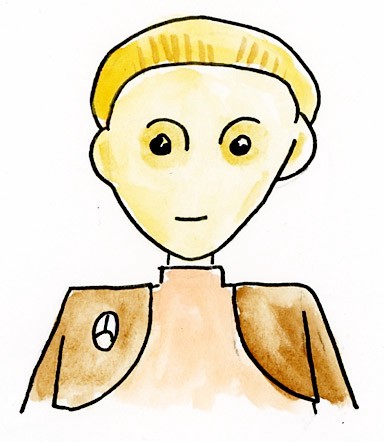 It?s never fun to say goodbye to these characters.
It?s never fun to say goodbye to these characters.
The last seasons of Star Trek shows tend to be kind of sad, and this is no exception. The first half of the season is comprised of standalone episodes and the second half is one continuous arc. Shadows and Symbols and It?s Only a Paper Moon are a standout episodes.
Optional episodes: Take Me Out To The Holosuite (S07E04): the crew of Deep Space Nine plays a team of Vulcans in baseball.
- S07E1: Image in the Sand
- S07E2: Shadows and Symbols
- S07E3: Afterimage
- S07E6: Treachery, Faith and the Great River
- S07E8: The Siege of AR-558
- S07E9: Covenant
- S07E10: It?s Only a Paper Moon
- S07E14: Chimera
- S07E16: Inter Arma Enim Silent Leges
- S07E17: Penumbra
- S07E18: ?Til Death Do Us Part
- S07E19: Strange Bedfellows
- S07E20: The Changing Face of Evil
- S07E21: When it Rains?
- S07E22: Tacking into the Wind
- S07E23: Extreme Measures
- S07E24: The Dogs of War
- S07E25: What You Leave Behind, Part I
- S07E26: What You Leave Behind, Part II
There are no movies or media to consume after the end of Deep Space Nine, the show wraps itself up pretty conclusively. In a sense, the best post-DS9 media is the conversations you can have about it afterwards. I can tell you from experience that there is a special thrill when you meet someone who has also seen the show. No matter where you?re from, you?ll both have a special connection to Deep Space Nine.
On the last day of shooting, showrunner Ira Steven Behr stood on the scaffolding on the side of the set, and gave a tearful farewell speech to the cast and crew:
As the captain said, this is the best crew ever. This may be the last time we?re all together, but no matter what the future holds, no matter how far we travel, a part of us, a very important part, will always remain here ? on Deep Space 9. Okay. Back to work.
Many thanks to Lee Sargent for illustrating this article! You can buy originals of his work on Etsy, and follow him on Tumblr, where he?s posting a Star Trek illustration every day.
Thank you also to my fellow DS9 nerds who helped proofread this and checked over my episode guide: Chip Nixon, Terra Field, Chris Rathjen, Graham Stark, Trin Garritano, Rich Gallup, R. Stevens, and Mikey Neumann.
If I forgot any key episodes, let me know at @MaxTemkin. If there?s interest, I?ll write similar posts for Voyager and Enterprise.
